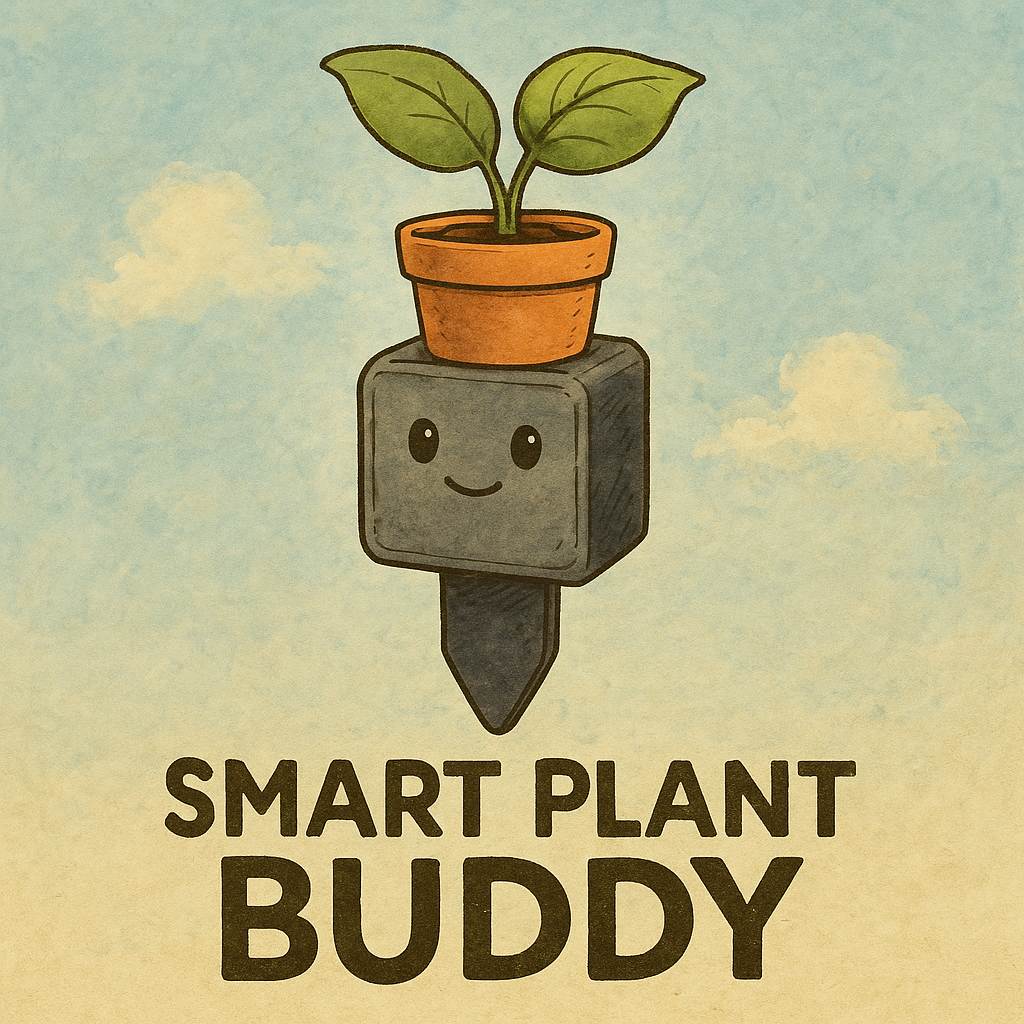The Big Idea
Co-Making (Almost) Everything – with AI
This final project isn't just about measuring soil. It’s about testing the boundaries of collaboration between human creativity and artificial intelligence. The result? A smart plant monitoring device that logs soil temperature and soil moisture, displays data through a Wi-Fi interface, and teaches you that yes, your plant is judging you.
Every part of the process — from concept to PCB to web dashboard — was developed in a chaotic, beautiful loop between me and ChatGPT-4. Instead of drafting formal specifications, I typed my doubts. Instead of documentation after the fact, I documented while building. This is what co-making looks like when you embrace uncertainty, humor, and iterative design powered by prompts.

1. Design Goal
The goal wasn’t to make a generic IoT gadget. It was to make something useful, elegant, finishable, and — above all — documentable. From the beginning, the AI helped balance ambition with constraints, pushing me to simplify, focus, and ship.
Prompt:
“Let’s co-design a final project that looks impressive but is realistically buildable...”
AI Response:
“How about a battery-powered, Wi-Fi-enabled plant monitor that reads soil moisture and temperature, logs to SD, and hosts a local web dashboard?”
2. Concept Creation
The project changed multiple times. We started with aquaponics, added too many sensors, removed most of them (RIP BH1750 and friends), and landed on the basics. Simpler, leaner, smarter. The conversation became a design space where choices emerged organically.
Prompt:
“This light sensor doesn’t work on my ESP32. What do I do?”
AI Response:
“Ditch it. The temp and soil sensors give you most of the insight you need. Save the I2C for what actually works.”
3. Decision and Selection
Choosing components, voltages, pin mappings, and even the type of JST connectors was a game of tradeoffs. The AI helped me document every decision, and often debugged wrong ones. We fought a lot over ESP32 GPIO quirks.
Prompt:
“My DS18B20 reads -127. Again. Breadboard’s fine, wiring’s fine… help me.”
AI Response:
“Try a minimal sketch just for the DS18B20. If it still fails, it’s the breadboard. Or the resistor. Or the universe.”
4. Evaluation of Features
In the end, the feature set reflects the things that worked reliably and could be built, logged, and demoed. The SD card logging is robust. The web interface works offline. The sensors behave. It’s not flashy — it’s just solid. That’s worth more than “smart fog simulation over LoRa” or whatever.
Prompt:
“Should I add a buzzer or LED to warn if soil is dry?”
AI Response:
“Only if you want to be annoyed. Web interface with real-time readouts is enough for now.”
Conclusion
The Smart Plant Buddy may be minimal in sensors, but it’s maximal in learning. This is a documentation-first, open-source, AI-supported hardware build. Every wire was discussed. Every bug was logged. Every regret is documented below in the prompt log. And honestly? It works. Not perfectly, but beautifully.
This is not “AI did my homework.” This is “I designed it with AI, and now we both know more than we did before.”